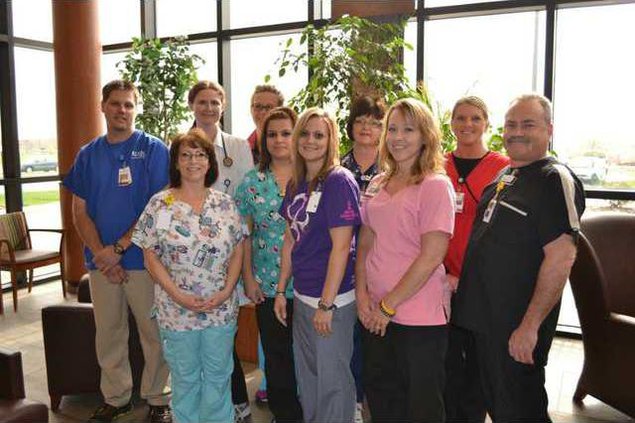Great Bend Regional Hospital has been documented as able to adequately care for a stroke patient brought to the facility, the American Heart Association and the Kansas State Stroke Task Force announced last Wednesday. GBRH was added to a list that already included Clara Barton Hospital in Hoisington as hospitals that provided the necessary documentation to be named as Emergent Stroke Ready as part of the Kansas Initiative For Stroke Survival (KISS).
“Because stroke treatment must be initiated within a very short time frame it is crucial that medical facilities, regardless of size, be prepared to evaluate and treat these patients, and if necessary, transfer them to a larger facility,” said Dr. Lechtenberg, neurologist and chairperson of the Kansas State Stroke Task Force. “Without these facilities, treatment options are greatly reduced.”
Emergent Stroke Ready hospitals can diagnose, treat, and transport acute stroke patients to a higher level of care as warranted. They must annually attest to the Kansas State Stroke Task Force their continued compliance with designation criteria.
Led by a team of more than 50 medical professionals, KISS was created in 2004 to study and address the issue of stroke care in Kansas and develop a comprehensive system of stroke care. As a result, the percent of intravenous tPA (clot buster) treatment in Kansas has increased and more Kansans are being transferred from Emergent Stroke Ready hospitals to higher level hospitals for additional care.
There is still much more work to be done in subsequent phases to get the remaining 60 hospitals in Kansas to participate and increase stroke survival numbers in the state of Kansas.
According to the American Heart Association, the expected use of tPA as a stroke treatment is 10-15 percent. The use of tPA in Kansas is far below this. “Part of the reason for this low treatment rate is limited access to neurologists, stroke specialists or physicians that have more experience in recognition and treatment of stroke,” said Dr. Lechtenberg. “ESRH’s now have 24/7 telephone access to stroke physicians to aid in appropriate treatment and transfer of stroke patients. This helps hospitals that do not have this stroke expertise to be prepared to urgently treat a stroke.”
In 2008, the task force studied a statewide stroke survey that revealed less than 25 percent of Kansans knew the signs and symptoms for a stroke and that calling 911 should be the first response to a stroke. During another survey administered to Kansas medical facilities in 2010, a staggering 43 percent of Kansas hospitals noted that they were not equipped or staffed to care for stroke patients. Additionally, less than 18 percent had tPA available.
“We know that this new system of stroke care will save more lives in Kansas,” said Cherie Boxberger, director of quality and system improvement, American Heart Association. “Early results indicate Kansas is on the way to improved care for Acute Ischemic Stroke but we still need the remaining hospitals in Kansas to get involved. With 100 percent participation from medical facilities and EMS Services across the state, we can optimize treatment and save more lives.”
Heart Association declares GBRH Emergent Stroke Ready





